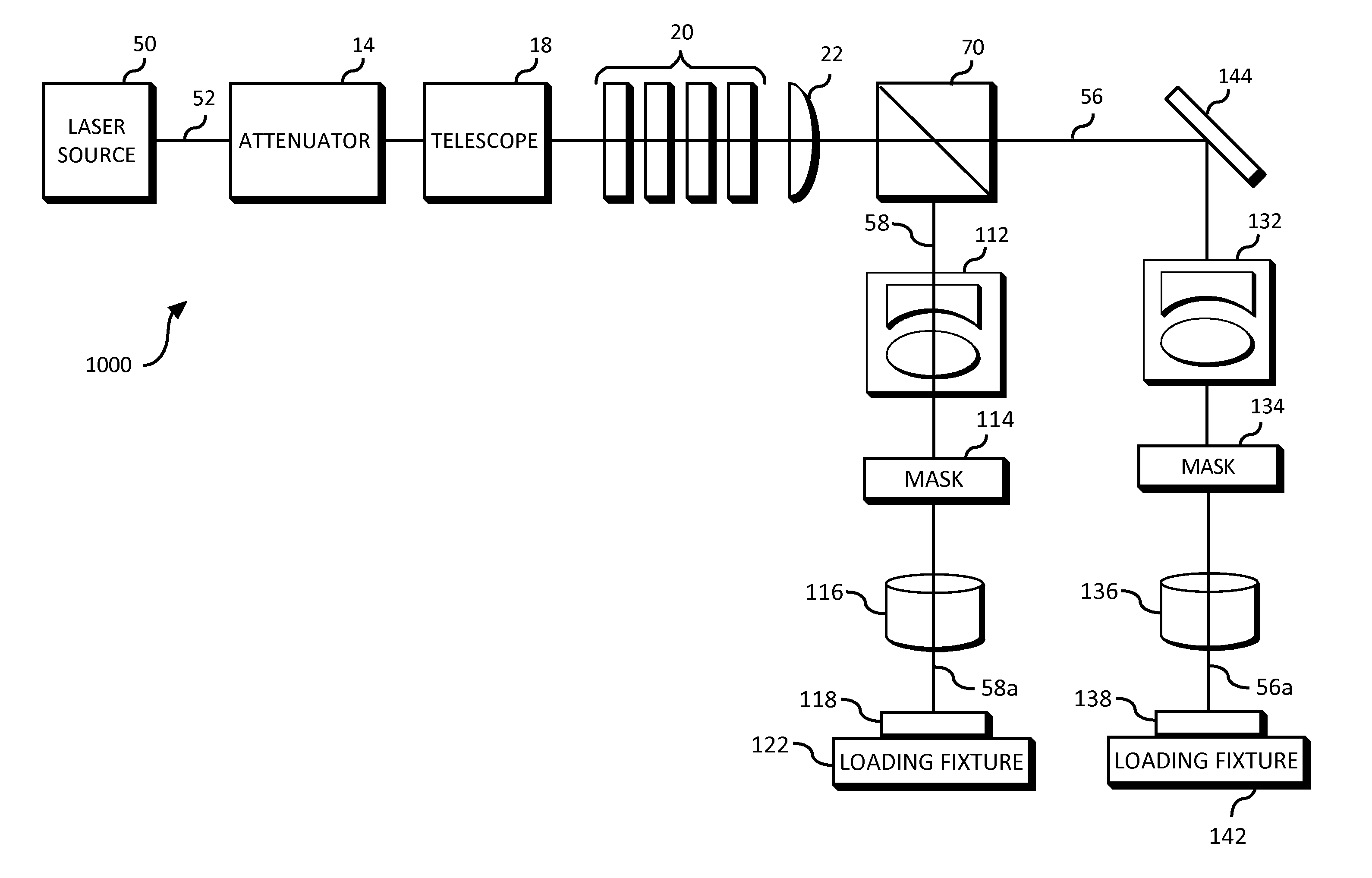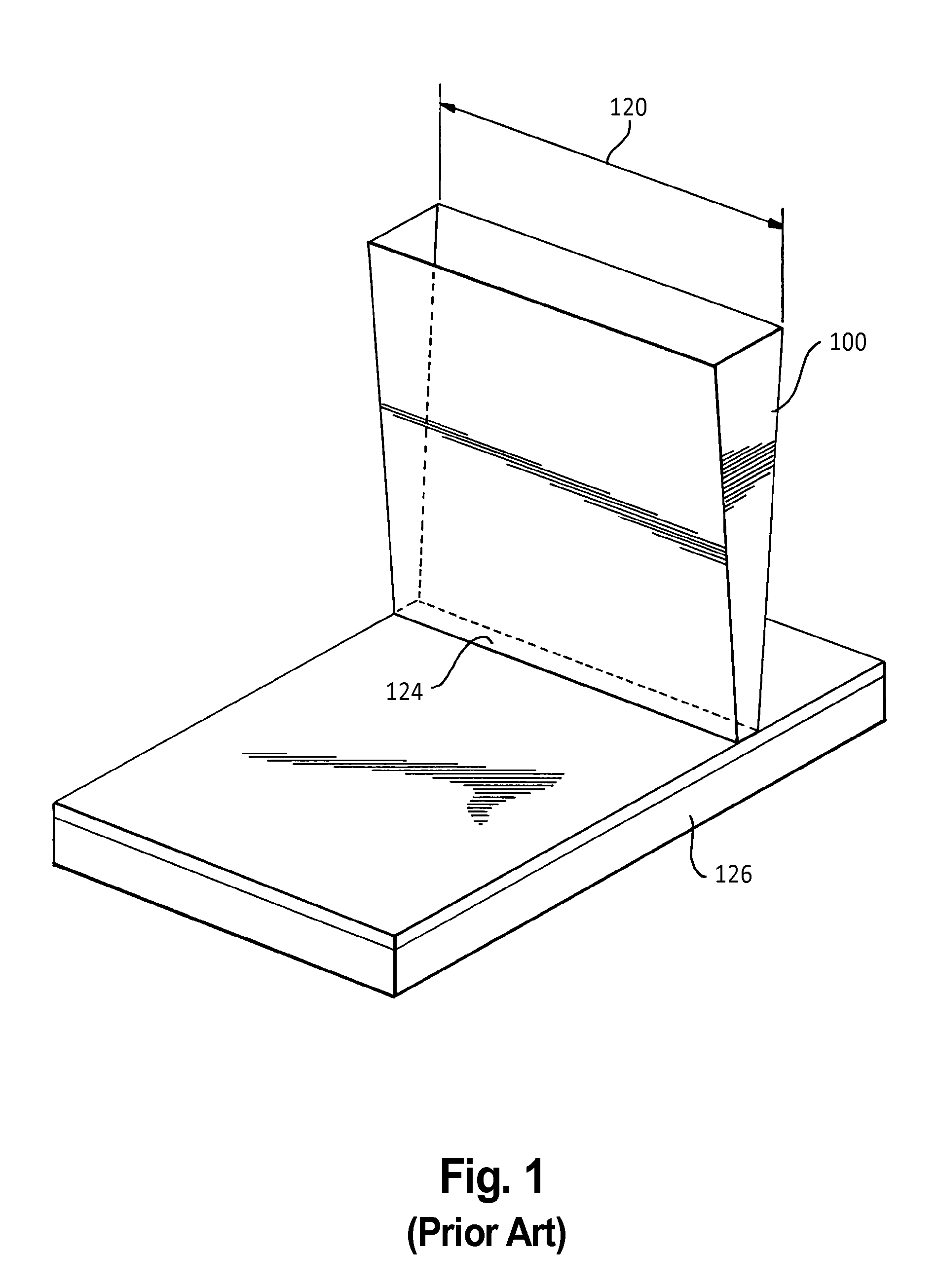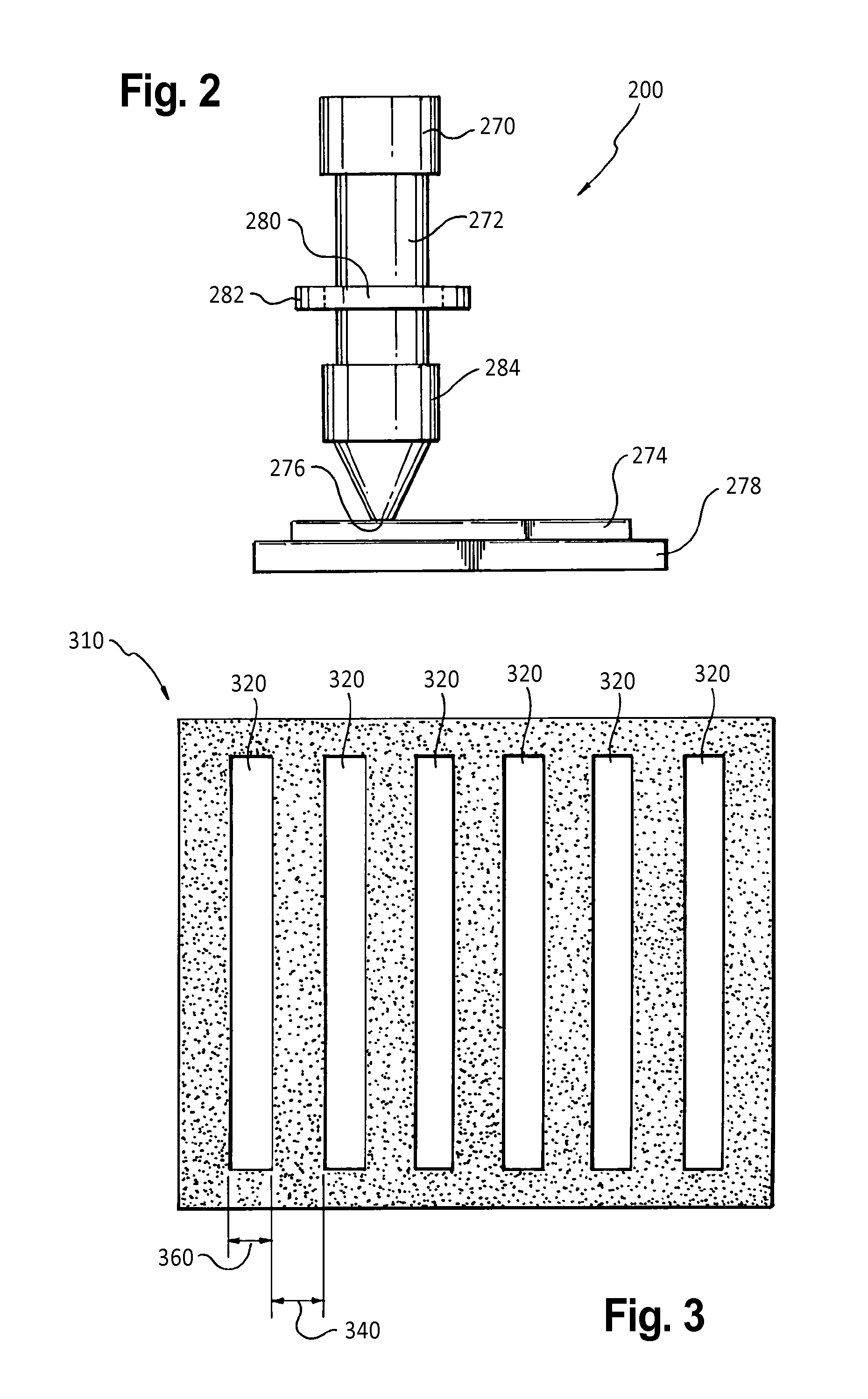Systems and methods for processing thin films
a technology of thin film and processing method, applied in the direction of laser beam welding apparatus, welding apparatus, manufacturing tools, etc., can solve the problems of consuming a lot of energy, so as to reduce the cost of manufacturing thin film, the effect of reducing the price per shot/pulse and efficient utilization of energy
- Summary
- Abstract
- Description
- Claims
- Application Information
AI Technical Summary
Benefits of technology
Problems solved by technology
Method used
Image
Examples
Embodiment Construction
[0042]The quality of a film that has been crystallized using a laser-induced crystallization growth technique depends, in part, on the energy beam characteristics of the laser beam pulse that is used to irradiate the film and in the manner in which these laser beams are delivered, e.g., continuous scan, two-shot, n-shot, to the film. This observation is used to crystallize different regions of the films with laser beams having different energy beam characteristics in an energy- and time-efficient manner and to provide the film performance characteristics needed in device to be fabricated. Laser-induced crystallization is typically accomplished by laser irradiation using a wavelength of energy that can be absorbed by the film. The laser source may be any conventional laser source, including but not limited to, excimer laser, continuous wave laser and solid-state laser. The irradiation beam pulse can be generated by another known source or short energy pulses suitable for melting a se...
PUM
| Property | Measurement | Unit |
|---|---|---|
| transfer time | aaaaa | aaaaa |
| transfer time | aaaaa | aaaaa |
| length | aaaaa | aaaaa |
Abstract
Description
Claims
Application Information
 Login to View More
Login to View More - R&D
- Intellectual Property
- Life Sciences
- Materials
- Tech Scout
- Unparalleled Data Quality
- Higher Quality Content
- 60% Fewer Hallucinations
Browse by: Latest US Patents, China's latest patents, Technical Efficacy Thesaurus, Application Domain, Technology Topic, Popular Technical Reports.
© 2025 PatSnap. All rights reserved.Legal|Privacy policy|Modern Slavery Act Transparency Statement|Sitemap|About US| Contact US: help@patsnap.com



